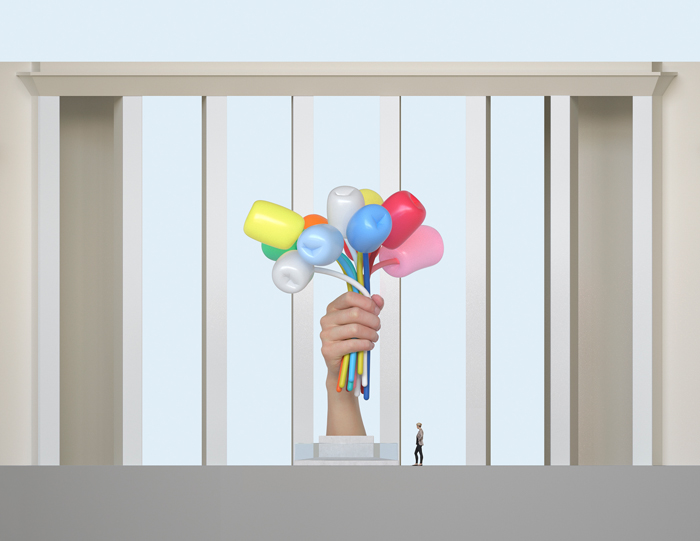In Paris, along the Pont de l’Alma, a sculpture of a Zouave soldier stands proudly at the base of one of the bridge’s supports. The Zouave was originally sculpted in the 1850s by Georges Diebolt as one of a set of four types of soldiers—a Zouave, but also a grenadier, a chasseur, and an artilleur. The bridge itself was first constructed in the 1850s, and then quickly named after the Battle of the Alma, which was a less than decisive French and British victory in the Crimean War. Now, only the Zouave has persevered, with the other three soldier statues repurposed as public art in other parts of France.
When the water level remains low, the Zouave marks the interstice between road level of the bridge and the flowing water of the Seine. His blousy pants, coupled with the cape around his shoulders, distinguish his identity from more traditionally western soldiers seen on other war memorials and Napoleonic historical sites—he has not only survived a century and a half of exposure to the elements, but also our increasing understanding of the mechanisms of appropriation and control that resulted in the creation of colonial regiments like the Zouaves. Formed near the beginning of France’s African conquests, the Zouaves were originally made up entirely of native Algerians, and then, over time, they recruited primarily native Frenchmen who still wore variations of the original uniform. They fought bravely in Crimea, during the Franco-Prussian War, and in World War I before being subsumed into the rest of the French army. American Zouaves, adapting the French uniforms and reputation of fierceness, fought in the Civil War.
The Zouave on the Pont de l’Alma, vigilant and strong, also alerts Parisians to the rising water levels of the Seine. A couple years ago, when the city experienced a moderate flood, the water rose to the Zouave’s waist—when I saw articles about parts of the Louvre being on stand-by and then temporarily closing, my first thought was to check to see where the water sat on the Zouave. In early 1910, when an extreme winter flood crippled the city and caused 400 million francs in damage, the expanding waters of the Seine came up to his shoulders, the highest, to my knowledge, that it has ever reached.
June 2016. Image from Wikimedia Creative Commons.
I was thinking of the Zouave today, of all days, because I’ve been following closely as France has been shaken by the gilets jaunes protests that have occurred in the past few weeks and threatened major cultural institutions and monuments in the center of Paris that have come to mean so much to me in my years studying France and its art. From the U.S., it has been hard to follow a series of events that American media is barely covering—we have our own perplexing, dangerous series of events at hand. I never picked up a fluency with French media beyond the nineteenth century, never enough to know which commentators or publications to trust. Some of the most well-established publications have even more draconian paywalls than their American counterparts. It’s hard to know who, like the Zouave, stands as an reliable indicator of the impact of a political flood on French society.
If these last months of shootings, bombings, and fiery protests in Paris have taught us, it’s that European cultural heritage isn’t as sacrosanct as we think. The Zouave may not stand forever; it may even be poetic symmetry rather than outrage to see him disintegrate over time into the water and swept out to sea. Today, in his address to the French people where he promised a higher minimum wage in the hopes of quelling the protests, Emmanuel Macron said, “When violence is unleashed, freedom ends.” The nineteenth century showed over and over again that the exact opposite of Macron’s words can be true, especially in France. And so we wait to see what will happen, and we watch, like the Zouave guarding the Seine, hoping that the water will not overflow its banks again..





